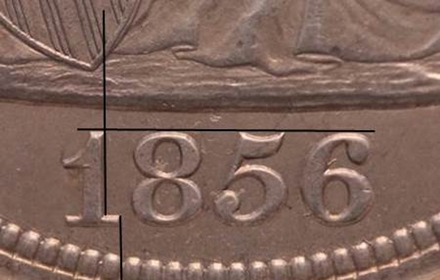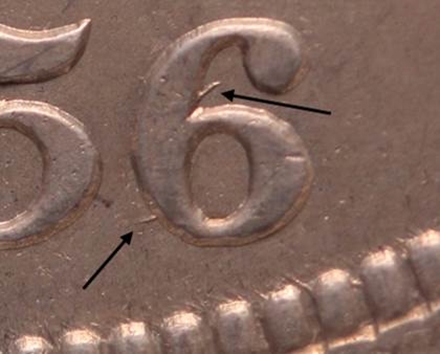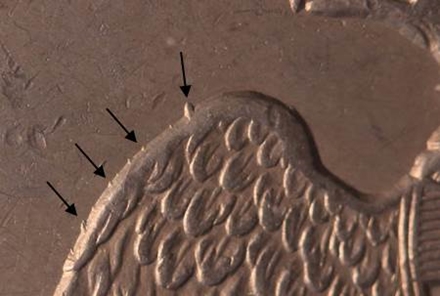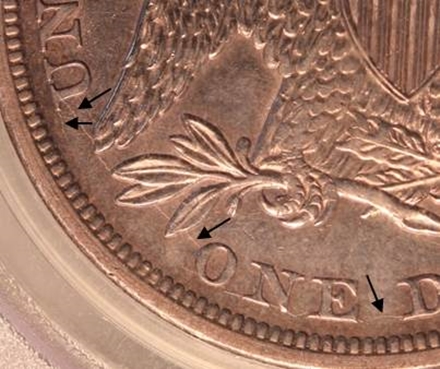|
|
Comments: This is the only use of Obverse 1 and the only use of Reverse A. |
Obverse P1 The photo below shows the Obverse 1 attribution grid.  1856 Obverse 1 attribution grid This is the only business strike obverse die. Its unique features make it easy to attribute, although the date position is very similar to the proof obverse. The next photo expands to show the repunching on the 6.  1856 Obverse 1 repunched 6 For many years, this repunching was considered to be an overdate, 6/4. This was because most examples show only the line in the upper loop of the 6, which appears to be the diagonal of an underlying 4. Only early die states, such as the one pictured, show the repunching to the left of the lower loop of the 6. We showed in an article in Issue #115 of the Gobrecht Journal (reference 12) that this repunching is actually an underlying 6, which was first punched at a 45-degree angle, then corrected to its final position. Early die states, which show all the elements of the under-digit seen in the photo, are rare, probably less than 10% of the surviving examples of the date. We rate them as at least R5. Also, note in the second photo the diagonal die lines extending up to the left from the denticles. These are seen on the rare early die states but not on the normally seen mid- to late-die-state examples. We’ve included this early die state (obverse die state a or b) as one of our Top-30 varieties.
|
1856 Reverse A features several markers that allow easy identification. The most obvious is a large lump that extends into the field from near the top of the curve of the left wing. Other smaller lumps are visible farther down the edge of the wing. These are shown in the following photo.  Reverse A lump on eagle's left wing In the state that’s usually seen this reverse displays numerous die cracks. Some of these are shown in the following photo.  Reverse A die cracks
|
| Photo credits:
Obverse 1 and Reverse A: 1856 ANACS AU58, from the Osburn-Cushing reference collection. Reverse A die cracks: 1856 PCGS AU55, from the Osburn-Cushing reference collection. |
